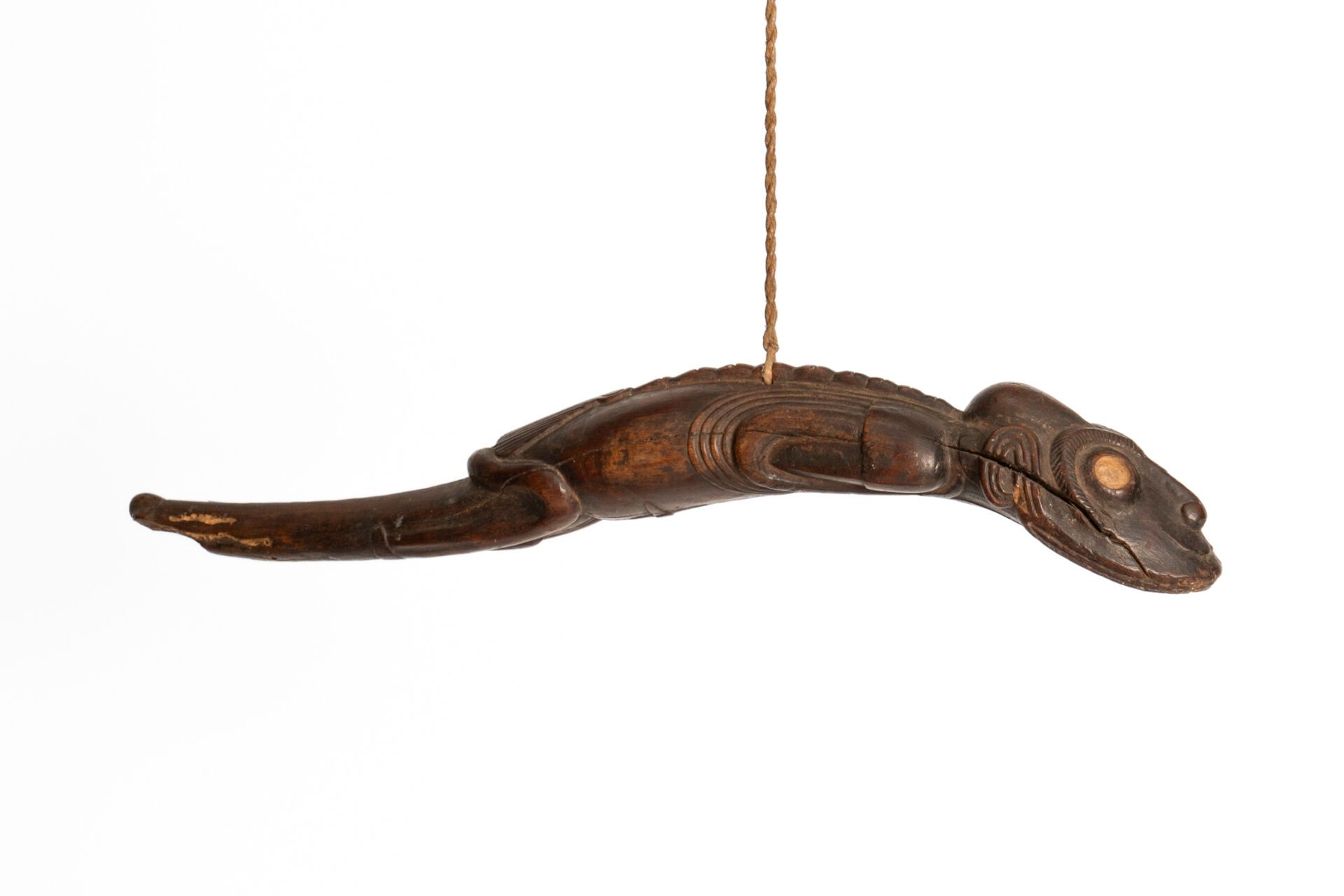Description
"TANGATA MOKO" Rapa Nui. Easter Island. Fine-grained toro miro hardwood with dark patina in the hollows, lighter with reddish-brown highlights on the prominent parts. Representing a "lizard man", the construction of this "tangata moko" is complex, combining human physical features with animal characteristics. The visible ribs, protruding spine and humanized facial features are immediately reminiscent of the better-known "moaia kava kava" figures. Arms folded over the thorax lead to hands with long, tapering fingers beneath the lower jaw. The swollen abdomen is adorned at its center with a four-pointed star-shaped glyph, in place of the navel. High thighs bent on either side of the abdomen and slender legs frame the caudal appendage. Date: late 17th/early 18th century. Length: 40.5 cm, weight: 440 g. Erosion at the base of the caudal appendage and a later retouch. Accident to the lower jaw resulting from a knot in the wood, minimal age cracks on the abdomen, as well as a crack along the left jaw. Some insect bites, string not original. A full CIRAM report (scientific report 0224-OA-298J dated March 19, 2024) is enclosed, confirming dating and wood type. Provenance: French private collection. Expert: Bruno FREY
263
"TANGATA MOKO" Rapa Nui. Easter Island. Fine-grained toro miro hardwood with dark patina in the hollows, lighter with reddish-brown highlights on the prominent parts. Representing a "lizard man", the construction of this "tangata moko" is complex, combining human physical features with animal characteristics. The visible ribs, protruding spine and humanized facial features are immediately reminiscent of the better-known "moaia kava kava" figures. Arms folded over the thorax lead to hands with long, tapering fingers beneath the lower jaw. The swollen abdomen is adorned at its center with a four-pointed star-shaped glyph, in place of the navel. High thighs bent on either side of the abdomen and slender legs frame the caudal appendage. Date: late 17th/early 18th century. Length: 40.5 cm, weight: 440 g. Erosion at the base of the caudal appendage and a later retouch. Accident to the lower jaw resulting from a knot in the wood, minimal age cracks on the abdomen, as well as a crack along the left jaw. Some insect bites, string not original. A full CIRAM report (scientific report 0224-OA-298J dated March 19, 2024) is enclosed, confirming dating and wood type. Provenance: French private collection. Expert: Bruno FREY
